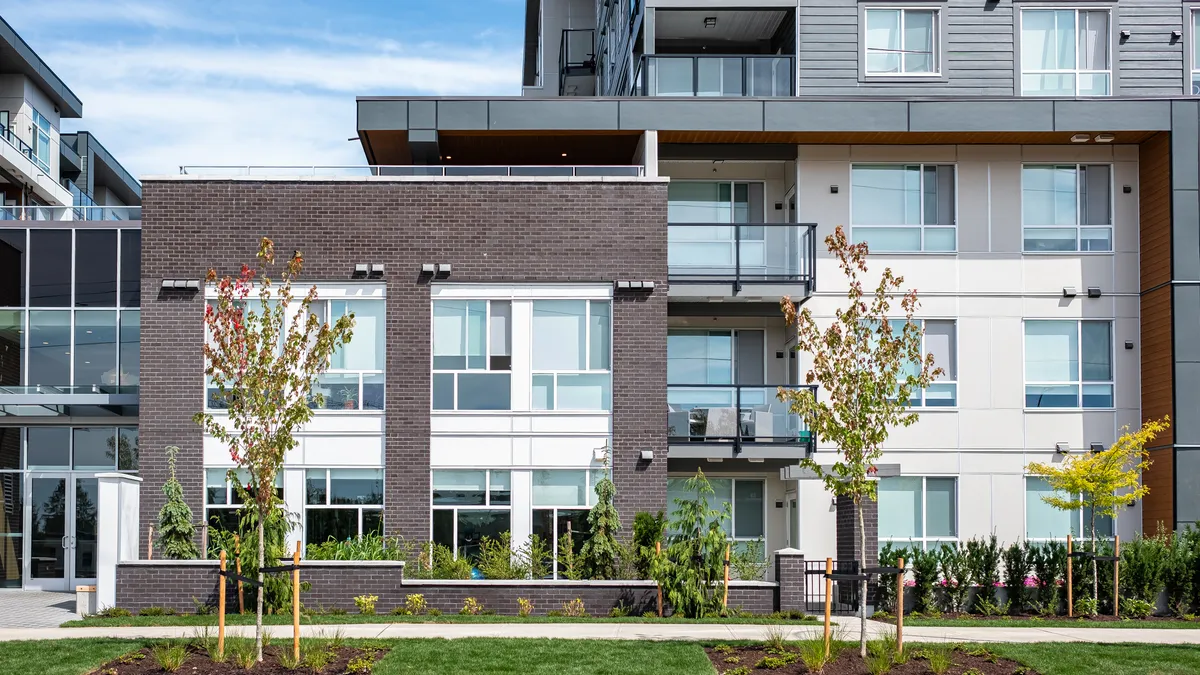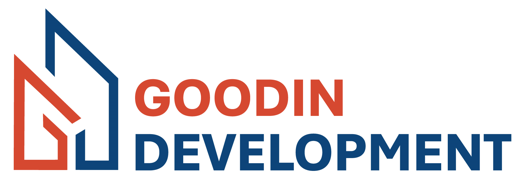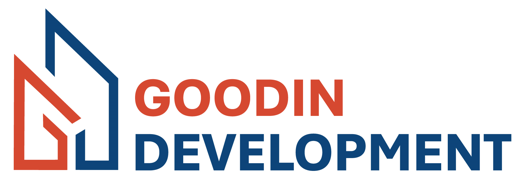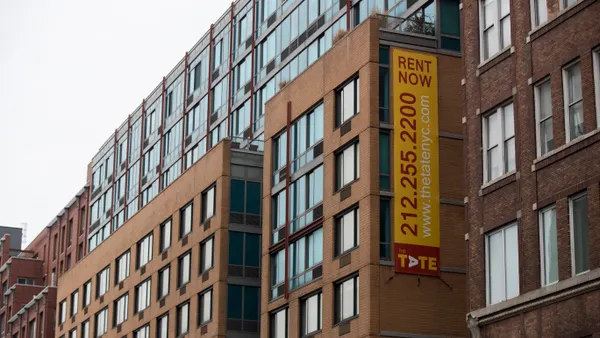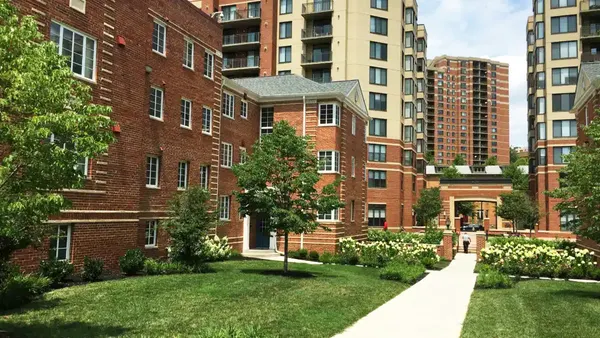The national average rent rose by $3 from May to June, up to $1,749, according to Yardi Matrix’s latest National Multifamily Report. Year-over-year rent growth stands at 0.9%, unchanged from the previous month.
In the seven years between 2013 and 2019, just before the onset of the COVID-19 pandemic, advertised rents rose by an average of 1.8% in the second quarter and 2.4% in the first half of the year, according to the report. Growth has slowed to about half of this rate in 2025 — 0.7% in the second quarter and 1.2% in the first half of the year.
Single-family rents rose by $4 from May to June, up to $2,201, according to Yardi — up 0.7% YOY and 0.8% for the first half of the year.
| Market | YOY rent growth, June 2025 | YOY rent growth, May 2025 | Difference |
|---|---|---|---|
| Chicago | 3.6% | 3.1% | 0.5 |
| Columbus, Ohio | 3.3% | 3.3% | 0 |
| Kansas City, Missouri | 3.2% | 4.0% | -0.8 |
| New York City | 3.1% | 5.7% | -2.6 |
| Detroit | 2.9% | 3.1% | -0.2 |
| Indianapolis | 2.4% | 2.8% | -0.4 |
| Twin Cities | 2.4% | 2.7% | -0.3 |
| New Jersey | 2.3% | 3.0% | -0.7 |
| San Francisco | 2.2% | 1.6% | 0.6 |
| Philadelphia | 2.0% | 3.4% | -1.4 |
SOURCE: Yardi Matrix
More than 250,000 apartment units were absorbed YOY through May, according to Yardi, led by Austin, Texas, with 22,000 units absorbed. Other strong absorption markets included Charlotte, North Carolina; Nashville, Tennessee; Raleigh-Durham, North Carolina; and Orlando, Florida — Southern and Sun Belt markets with negative rent growth YOY.
New York City has slipped from first to fourth place for YOY rent growth, supplanted by Chicago at 3.6%, Columbus, Ohio, at 3.3% and Kansas City, Missouri, at 3.2%. Occupancy remaineds unchanged at 94.6% in May. (Occupancy data is current to the previous month.)
Rent performance has been solid so far in 2025, up $20 from the beginning of the year, according to Yardi. Despite ongoing solid demand for apartment units from renters, economic uncertainty and rapid supply growth following two years of record deliveries have kept this year’s rent growth muted.
“The economy and job market remain strong, but growth has slowed, and the impact of tariff and immigration policies in the second half remains uncertain,” the report reads. “Unemployment is low, but job switching has declined, reducing labor market dynamism. Policy uncertainty continues to challenge business planning, with the new tariff implementation date pushed again to August.”


